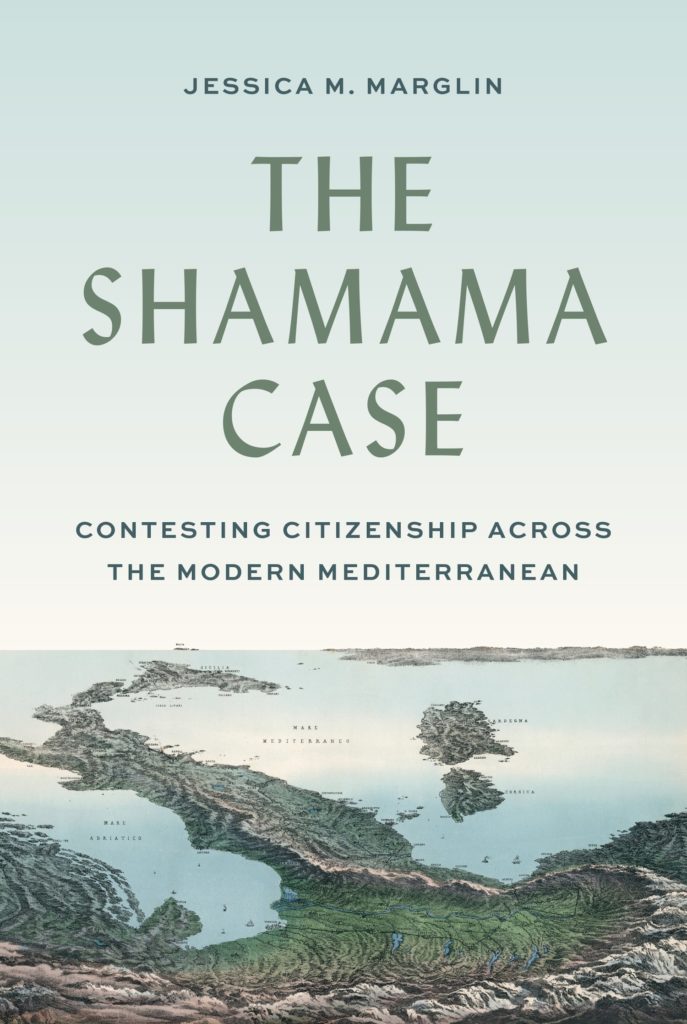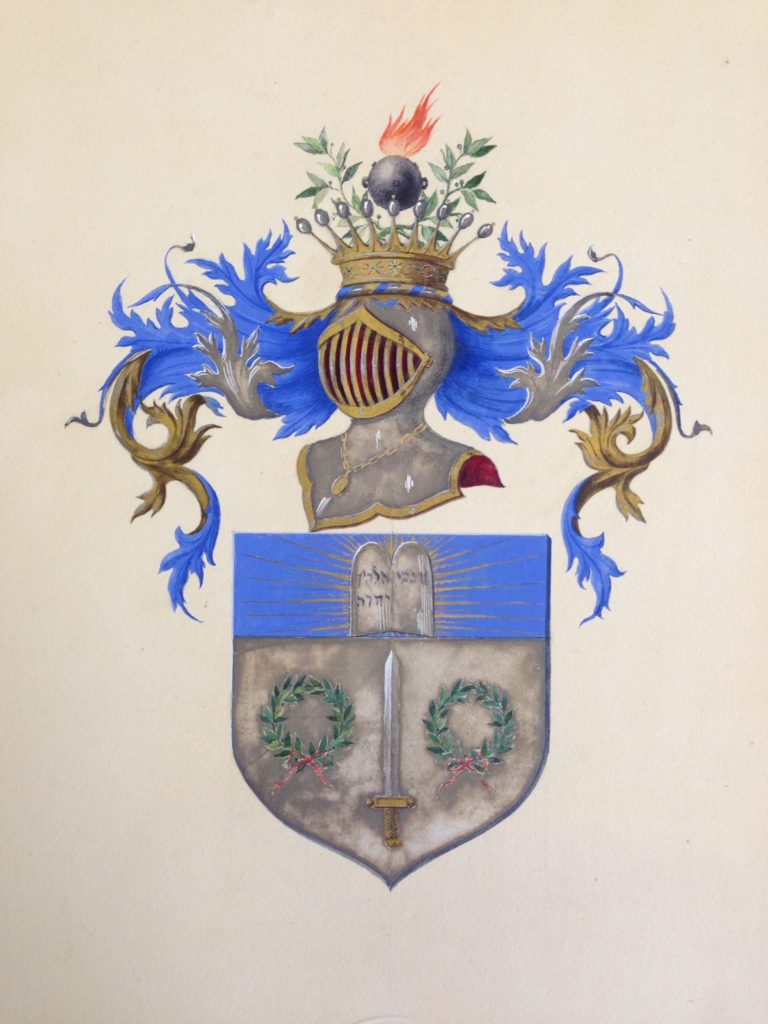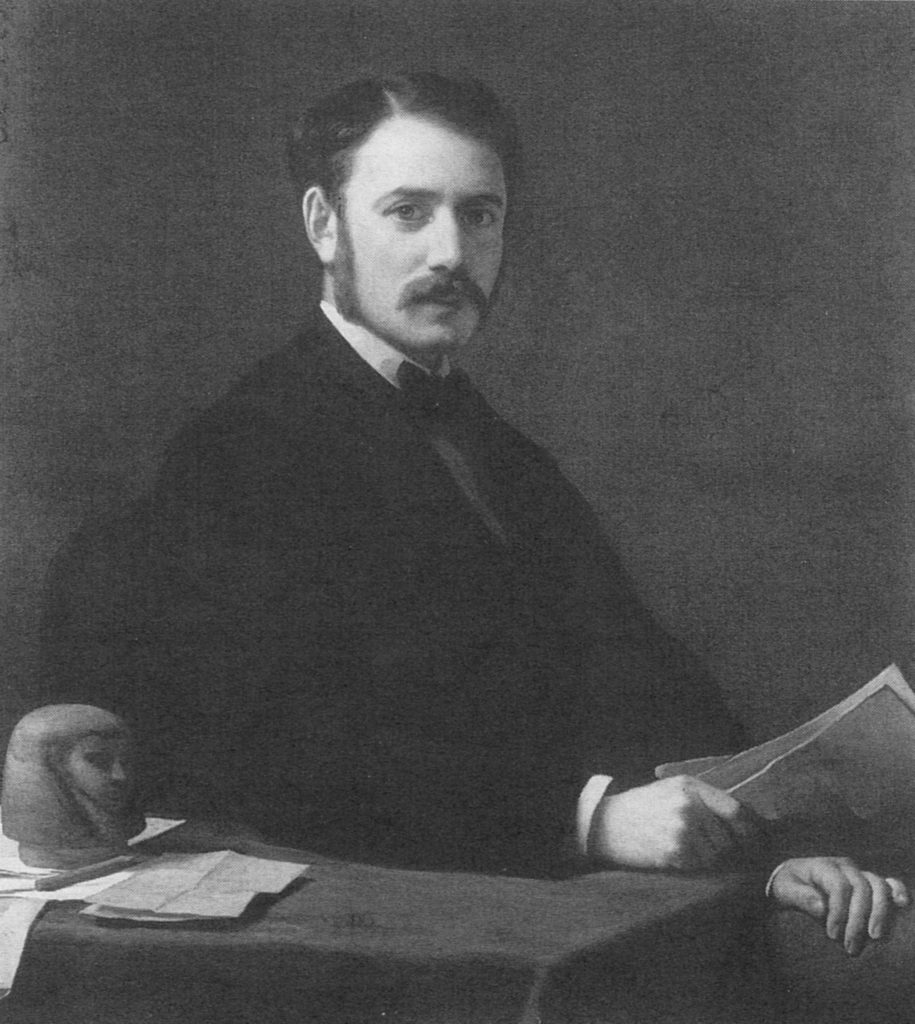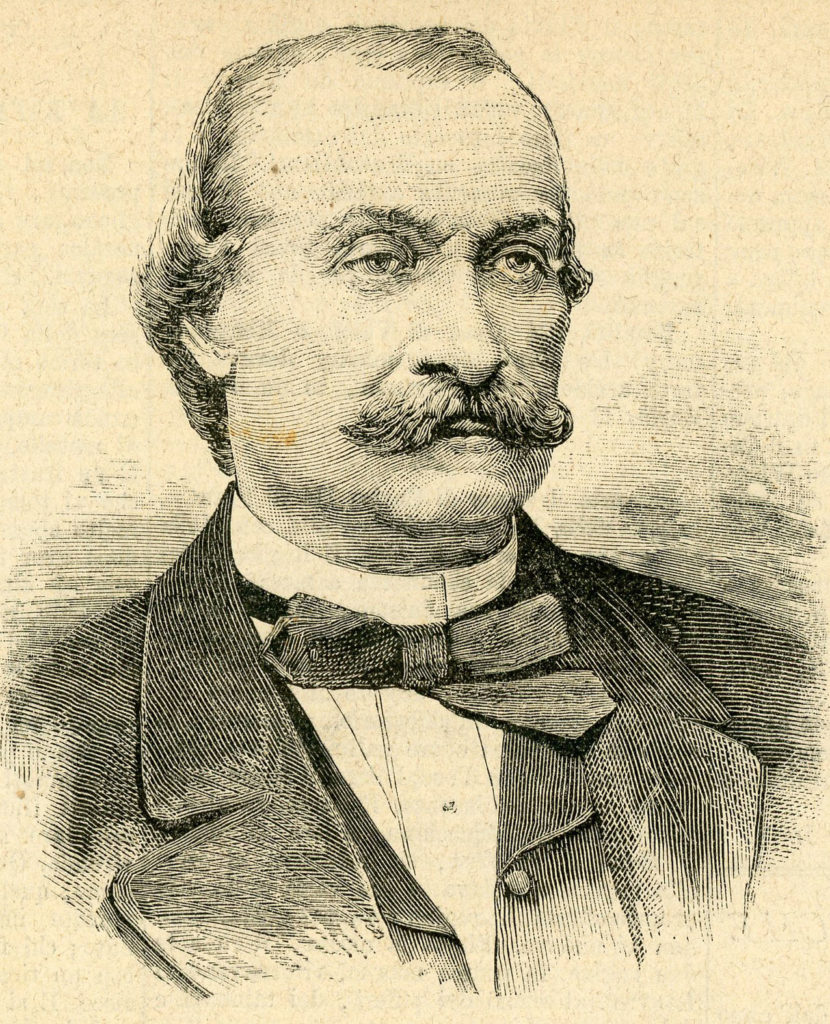[Ed. Note: This past November, Dr. Jessica Marglin took the time to discuss her new book. The Shamama Case: Contesting Citizenship Across the Modern Mediterranean (Princeton University Press, 2022) with The Docket. Here is our conversation.]

The Docket [TD]: How did you get interested in the Shamama lawsuit and how long have you been working on this project?
Dr. Jessica Marglin [JM]: In the process of doing research for an article shortly after defending my dissertation, I stumbled across the lawsuit over the estate of Nissim Shamama, a Tunisian Jew who died in Italy in 1873. I had been given the excellent advice to set the dissertation aside for a bit, so I turned to a new project about Abraham Ankawa, a rabbi who lived his life between Morocco and Algeria. Ankawa published a controversial treatise on the Jewish law of ritual slaughter with Elia Benamozegh, a Hebrew publisher in Livorno, Italy. Benamozegh ended up defending Ankawa in the ensuing debate over his book; I soon found that he was a mystically inclined philosopher who had written only two books on Jewish law. Both concerned someone named Nissim Shamama. Intrigued, I set off to find out more about Shamama. Thanks to an excellent bibliography by Robert (Abraham) Attal on Jews in North Africa, I discovered that there were literally dozens of legal briefs and responsa in multiple languages about the Shamama case.

I read as much as I could get my hands on, but there was very little secondary literature—just a couple articles and a chapter of an unpublished dissertation. I honestly wasn’t sure if the case merited a whole book—at least not until I got to the archives in Tunisia. In the National Archives in Tunis, I discovered that dozens of dossiers with thousands of pages of correspondence were dedicated to Shamama. Here was a case that played out across the Mediterranean, in which North African Jews were at the center of a legal debate involving both Italy and Tunisia. I was particularly drawn by the question of citizenship at its heart.
But it was a few days into that first research trip to Tunis when I really started to imagine writing a book about the case. I was reading a document about one of the supporting characters in the lawsuit, an Algerian Jew named Leon Elmilik (or Eliyahu Almaliah), and I began to get a whiff of his pugnacious personality—something that would come out in spades as I worked through the archival material. I suddenly saw that I was learning not just about a lawsuit, but about the people involved. I fell in love with the idea of bringing these characters to life.
TD: The title implies that this book is about a single case, but it won’t take readers long to see that what you are really doing here is peeling back the historical layers to reveal an entire world of legal thought and practice. Can you try to summarize that world for our readers?
JM: That is certainly what I intended to offer, but I admit that trying to summarize it seems daunting! I would start by saying that I want emphasize the extent to which legal thought and practice were very much in flux, both in North Africa and in Europe. Modern international law was just emerging as a distinctive field in Europe—indeed the Institute of International Law was founded in 1873, the same year that Shamama died. And laws surrounding state membership on both sides of the Mediterranean were in flux. Italy—only recently unified into a single nation-state—passed its first Civil Code in 1865, eight years before Shamama died. The very man who wrote the section about private international law—Pasquale Stanislao Mancini—worked as a lead lawyer on the Shamama case. Similarly, in 1861 Tunisia introduced a new law called the Qanun al-Dawla in Arabic (literally “the law of the state,” though it is usually referred to as the “Constitution”). This codified questions of subjecthood in the context of an effort to combat rising abuses of extraterritoriality. What became clear in the lawsuit is that the interpretation of these new legal texts—the Italian Civil Code and the Tunisian Qanun al-Dawla—were still very much in flux in the 1870s.
I suppose in every historical period, law is in the process of changing; nonetheless, I think the second half of the nineteenth century was especially transformative in the Mediterranean—especially when it comes to citizenship. The challenges and opportunities of nationalism meant that jurists and ordinary people alike were coming to think about belonging in new ways. Nationalist logic sought to link state membership with ethno-cultural nationality in new ways—and the precise boundaries of nationality (both ethnic and legal) remained very much open to interpretation. These new ways of approaching belonging posed particular challenges for Jews, who were the perpetual square pegs trying to fit into round holes. Jews’ otherness came to be thought about differently in the late nineteenth century, not only in Europe but in North Africa as well. In this moment of trans-regional legal turmoil, possibilities that today seem absurd were taken seriously—such as the idea that Judaism was a nationality and Jewish law a national law.
TD: By our count, you’ve consulted 8 archives in Italy, 5 in France, and 1 each in Tunisia, Israel, and Turkey to identify the sources for this book. Can you walk us through some of the challenges of doing multi-archive work to this extent? How did you manage the research process with this many different archives and collections?
JM: I was lucky to be able to start my research in Tunis, where the largest collection of material on Shamama is held. I quickly realized that this would be my source base, and my early research centered on these archives. I was also very lucky to benefit from the support and wisdom of truly generous colleagues in Tunis, particularly Karima Dirèche, who opened countless doors for me.

In some ways, the Tunisian archives were the easiest to navigate: they are centralized, have a wonderful finding aid for the “série historique” (historical series), and the archivists were efficient and patient with my repeated requests for more material. I was a bit daunted by the Italian archival scene, which I knew not at all. I also did not know Italian when I started this project, so I had to learn enough to be able to both read the documents and communicate with archivists. I again benefitted enormously from generous colleagues, especially Liana Funaro in Livorno and Mauro Canali in Rome. And a six-month fellowship at the American Academy in Rome made it far easier to learn the lay of the land in a way I think would have been quite challenging to do in short archival trips.
I should note that what attracted me to this case was precisely its transregional nature. And while there certainly were challenges in trying to track down traces of the Shamamas in different countries, visiting so many archives was made easier by virtue of doing a microhistory. While it can be time consuming to navigate a new archive, at least I had a clear sense of what I was looking for each time I showed up in a new place.
TD: Given the uncertainty that surrounds citizenship and belonging in today’s world, we wondered whether you felt that your argument and conclusions in this book speak to contemporary crises or conditions?
JM: At some point during the writing of this book I jotted down the following and stuck it to the wall of my office: “We study the past so that we can reimagine the future.” I fear it sounds a bit trite—perhaps best suited for an inspirational calendar directed at historians. But I really do believe it: to my mind, one of the most powerful ways historians can contribute to contemporary debates is to remind us, again and again, that things have not always been this way.
In the book, I argue that citizenship should be seen as existing along a spectrum, rather than the binary made so famous by scholars like Rogers Brubaker; in this I am inspired by the work of Sarah Abrevaya Stein, among others.[1] To say that citizenship was not an either/or proposition is only novel because we have so essentialized twentieth-century ideas of state membership. We tend to think of nationality and citizenship like colors on a map, in which each country is shaded in a single tone—France blue, Italy green, Tunisia red. For many legal historians, people also belonged to a state in a clear and uniform way—as if all French citizens could be shaded blue, all Italians green, all Tunisians red, and colorful stripes for those lucky enough to be dual citizens.
The Shamama case, however, was all about a man whose citizenship was fundamentally unknown. This seems almost absurd today—and it is that very strangeness that makes the story so interesting. We have to quash our instinct to see state membership as a binary. Only then can we appreciate that most people in the nineteenth century experienced their attachment to one or more states as existing along a spectrum.
Hannah Arendt was correct that nationality—in the sense of state membership—amounted to “the right to have rights”; this continues to be the case today.[2] But could we imagine a world in which we did not put so much stock in citizenship as a formal status one either has or lacks? If so, perhaps we could also imagine a world in which both rights and economic opportunities are not tied to the “birthright lottery” (as Ayelet Shachar describes it).[3] Once modern citizenship becomes de-naturalized, we might find new paths towards a more just world.

TD: This next question is a bit more fun. The “cast of characters” section at the end of the book is quite a treat, but also a helpful tool to help readers with the many fascinating figures who keep popping up throughout the text. It did make us think about how The Shamama Case might work as a film? Who might you cast for some of the leading roles?
JM: This is such a gratifying question because I admit I have often daydreamed about the film adaptation of the Shamama case. But I had not indulged in thinking about who might be casted to play the characters until now. I had a lot of trouble deciding on someone to play Nissim Shamama, perhaps because although in some ways he is at the center of the book, his is also the personality that most escapes me. To avoid going on and on, I’ll just mention a few actors whom I think would be particularly perfect for certain roles.
Following the principle that the movies always make historical characters look better than they actually did, I would cast Timothée Chalamet as Nissim Jr., Nissim Shamama’s great nephew who was hustled out of Tunisia when he was but three days old. Chalamet would be excellent at capturing Nissim Jr.’s tortured relationship to his family; as an adult, he became—what else?—a lawyer specializing in wills and private international law. I would cast Hiam Abbass, a marvelous Palestinian actor, as Nissim Jr.’s mother ‘Aziza. I find Abbass’s portrayals of the particular joys and tribulations of immigrants deeply moving—and the fun of a film version would precisely be to take liberties with the emotional lives of the characters that I felt unable to do in a work of history.
Daniel Craig would make a fabulous Pasquale Stanislao Mancini, the celebrity lawyer who worked on the Shamama case; he would have the requisite panache to convey Mancini’s larger-than-life personality.
Even though Andrew Scott has moved away from playing only villains, I think he would be perfect as the Baron Emile d’Erlanger, the slimy banker who helped bankrupt Tunisia, and later bought up all the shares of the Shamama estate for a pittance. I would cast the Moroccan-French actor Gad Elmaleh as Leon Elmilik, the pugnacious Algerian Jewish fixer who worked for the Tunisian government. I think Elmaleh would bring just the right amount of absurdity to the role.
And while I’m fantasizing, I would love a cameo for myself—perhaps as an anonymous face in the crowd in Shamama’s native Tunis, or a domestic servant in one of his sumptuous homes in Paris or Livorno.
[1] Sarah Abrevaya Stein, Extraterritorial Dreams: Jews, Citizenship, and the Calamitous Twentieth Century (Chicago: The University of Chicago Press, 2016), 9.
[2] Hannah Arendt, The Origins of Totalitarianism (New York: Harcourt, Brace, and Jovanovich, 1978), 296-7.
[3] Ayelete Schacher, The Birthright Lottery: Citizenship and Global Equality (Cambridge: Harvard University Press, 2009).

